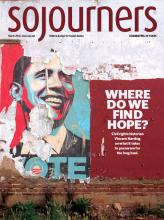JAMES CONE’S The Cross and The Lynching Tree argues a devastating point: American Christians grasp the horror and hope of the crucifixion only by looking at the lynching tree. The author anchors the cross within history, insisting that readers remember its inhumane absurdity. Cone alludes to this work when he contends, “to forget this atrocity leaves us with a fraudulent perspective of this society and of the meaning of the Christian gospel for this nation.” The Cross protests disembodied reflections by American theologians on sin and inordinately European treatments of theodicy. This protest is both invitation and indictment—an invitation to grapple with God’s goodness in light of America’s social sin; an indictment upon those who gasp at the Inquisition and the Crusades while glossing over the horrors of lynching. Ida B. Wells, the famous anti-lynching activist, punctuates the latter point: “Our American Christians are too busy saving the souls of white Christians from burning in hellfire to save the lives of black ones from present burning in fires kindled by white Christians.”
Cone strengthens his crucifixion-lynching analogy by composing a nuanced allusion. He cites Acts 10:39—“they hung him on a tree”—to establish a visual connection between Jesus’ crucified body and the battered flesh of lynching victims. Although he does not mention it, Deuteronomy 21:23, which is interpolated into Galatians 3:13, merits mentioning: “Cursed is everyone who hangs on a tree.” Next, Cone deepens the biblical allusion by expounding upon the song “Strange Fruit.” Consider the song’s haunting lyrics:
Southern trees bear strange fruit
Blood on the leaves and blood at the root
Black bodies swinging in the breeze
Strange fruit hanging from the poplar trees.
Read the Full Article
